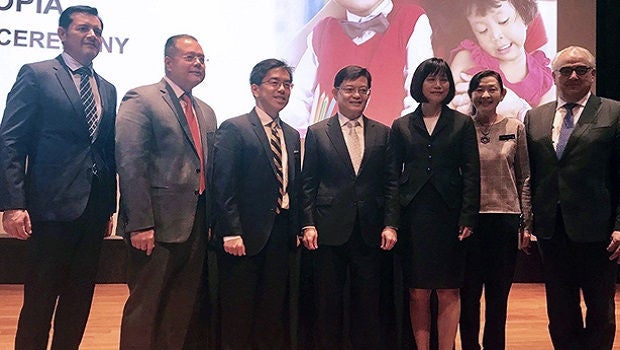HealthXchange will NEVER ask you to transfer money over a call. If in doubt, call the 24/7 ScamShield helpline at 1799, or visit the ScamShield website at www.scamshield.gov.sg.

The Singapore National Eye Centre (SNEC), Singapore Eye Research Institute (SERI) and Johnson & Johnson Vision (JJV) announced on 12 November that they would come together in a $36.35 million first-of-its-kind public-private partnership in Asia to tackle myopia. The partnership will create a deeper understanding of how the condition develops, how it progresses and how it may be intercepted.
Singapore has one of the highest prevalence rates of myopia in the world, with one in two children becoming myopic by the age of 12[1]. Prevalence rates among youths in Asia, including Singapore, stand at 80 to 97 percent[2], and half of the world's population is projected to have myopia by 2050[3].
Myopia increases the risk of retinal degeneration and detachment, cataracts and glaucoma. If left unchecked, myopia will become the leading cause of irreversible vision impairment and blindness[4]. Due to the complexity and scale of myopia, tackling this health challenge will require a multi-disciplinary approach that encompasses novel clinical research as well as innovations in education and clinical care.
Prof Aung Tin, Executive Director of SERI shared, "Documented increases in myopia, especially among young people, are a serious concern and if we can understand the underlying mechanisms that are contributing to its rapid rise, we can work to tackle the problem at its roots."
The focus of the partnership will be largely placed on developing predictive tools to identify those who may be at risk to develop high myopia, conducting research on the underlying mechanisms of myopia, to discover and validate methods to prevent the onset and progression of the condition.
According to Prof Wong Tien Yin, Medical Director at the SNEC, the collaboration will bring together the right mix of resources, clinical and scientific experience, and intellect to create a leading centre for myopia research, clinical care and education practices. He said, "SNEC is honoured to be working with collaborators coming together to address the growing burden of myopia."
Reference :
[1] SingHealth, Eye Check A look a common eye conditions
[2] Ding et al Survey of Ophthalmol 2015
[3] Holden et al Ophthalmol 2016;123:1036
[4] Fredrick, D. R. (2002). Myopia. BMJ, 324(7347), 1195-1199. doi:10.1136/bmj.324.7347.1195
Get the Health Buddy App
© 2025 SingHealth Group. All Rights Reserved.













 Get it on Google Play
Get it on Google Play